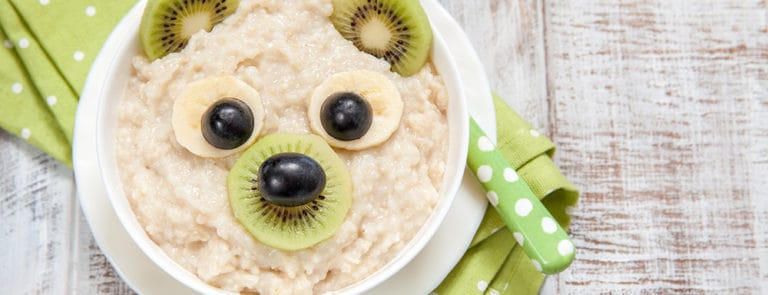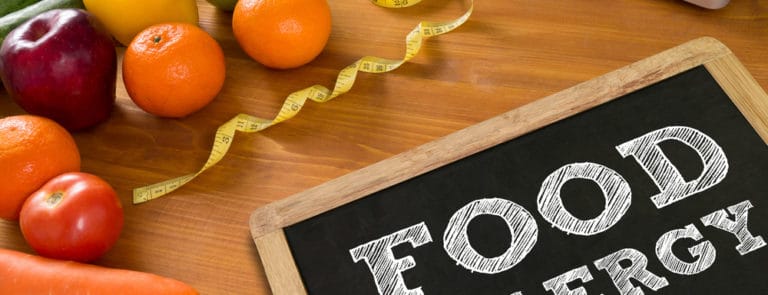10% off £30 OR 15% off £40
Code:DECIDE
What is histamine?

What is histamine, and what does it do? Dive into the world of histamine and learn more about how the food you eat could impact it, here in our helpful guide.
Itchy eyes, a runny nose and a tickly throat are all classic signs of hay fever, but have you ever wondered why your body reacts that way? It’s all down to a chemical found in your body and in some foods, called histamine.
We know that hay fever symptoms can be frustrating, but it’s also really important to remember that hay fever and other allergic reactions vary in severity. Sometimes allergic reactions can require urgent hospital treatment, so you should never ignore severe symptoms.
Here, we’ll dive deeper into histamine, and just how it causes hay fever symptoms.
What is histamine?
Histamine is a chemical that carries messages between cells. It’s made in the body by white blood cells called ‘mast cells’, but it’s also found in certain foods.2
What does histamine do?
Histamine acts as a signalling molecule, that plays an important role in many bodily functions such as:
Allergies
Histamine is best known for its role in allergic reactions. When the body mistakes a harmless allergen, like pollen, for a potential threat it releases histamine.3
Histamine stimulates mucus production and opens the blood vessels so an army of white blood cells can rush to our defence. This leads to the classic symptoms of some common allergies such as puffy eyes, congestion, itching, and swelling.5
Gut health
Histamine works to help stimulate stomach acid production.6 This then aids digestion and helps your intestines to move food, fluids, and waste.7
Sleep
Ever wondered why you feel drowsy when you take an antihistamine? That’s because histamine has an important role in the sleep-wake cycle. It works to help promote wakefulness and keep you feeling alert.8,9,10
Brain health
Histamine is involved in various brain functions, like learning, your memory, and overall cognitive function.11
Histamine intolerance
Your body will naturally produce histamine, alongside enzymes which work to break down the histamine you consume through food.12
In some cases, you might not make enough of the enzymes needed to break down histamine. This may cause histamine to build up in the body, especially if you eat a high-histamine diet, leading to histamine intolerance.13
The symptoms of histamine intolerance vary from person to person but may include:
- bloating
- diarrhoea
- abdominal pain
- constipation
- itchy skin
- dizziness
- headaches
- eczema or rashes
- runny nose and watery eyes


Histamines and food
The histamines in food are produced by bacteria when food ferments or decays, so generally the fresher the food, the fewer histamines it contains.15
High-histamine foods
Fermented, smoked, cured, and preserved foods tend to be particularly high in histamines.
High-histamine foods include:15
- pickles, kimchi, and sauerkraut
- fermented soy products, such as soy sauce, and miso
- processed, cured, and smoked meats
- mackerel, tuna, anchovies, and tinned sardines (if not freshly caught)
- fermented or aged dairy products like yoghurt and cheese
- foods that contain yeast, including bread, cake, and beer
- dried fruit
- alcohol, especially wine
Other foods don’t contain much histamine themselves, but growing research shows that certain foods may stimulate, or ‘liberate’, the release of histamines from the body’s mast cells.16
These include:16
- citrus fruits, bananas, berries, kiwi, papaya, and pineapple
- pumpkin and squash
- egg whites
- milk
- many spices, including cinnamon, cloves, and chilli powder
- chocolate
Black, green and mate tea, energy drinks and alcohol may also contribute to histamine intolerance by blocking production of one of the enzymes involved.17
Low-histamine foods
Some people find that following a low-histamine diet can help reduce allergy symptoms.16 While research into low-histamine diets is growing, the evidence available isn’t quite sufficient yet, and more needs to be learned when it comes to eating a diet low in histamine to manage histamine intolerance.16
A low-histamine diet includes eating foods such as:16
- gluten-free grains like quinoa
- most fresh fruit and vegetables (except those listed above)
- dairy substitutes like coconut and almond milks
- cooking oils like olive oil and coconut oil
- most leafy herbs and herbal teas
Low-histamine diets has gained a lot of interest from scientists with recent studies analysing an array of ingredients from eggs to wine, but evidence on which foods to avoid due to histamine levels or release in the body is still growing. Speak to a healthcare professional or a qualified nutritionist if you’d like to make a change to your diet to find out if it would be suitable for you.
The final say
It’s thought that almost 41 million people in the UK have at least one allergy. Whether it’s hay fever, a food allergy or asthma, histamine is the reason why your body reacts the way it does. That’s why, when your allergy flares up, you might take an antihistamine to relieve your symptoms.
However, histamine does so much more than just trigger allergic reactions. This chemical works hard to support other bodily functions like regulating your sleep-wake cycle, aiding digestion, and helping you learn.
Handpicked content
Although antihistamines are helpful for many mild allergies, some reactions are more severe and require immediate medical attention.
Please contact 999 if you are experiencing severe allergy symptoms. The advice in this article is for information only and should not replace medical care. Please check with your GP or healthcare professional if you are experiencing any allergic reactions.
1. Patel RH, Mohiuddin SS. Biochemistry, Histamine [Internet]. Nih.gov. StatPearls Publishing; 2023 [cited 2024 Mar 11]. Available from: https://www.ncbi.nlm.nih.gov/books/NBK557790/
2. Histamine | Description & Facts | Britannica. In: Encyclopædia Britannica [Internet]. 2024 [cited 2024 Mar 14]. Available from: https://www.britannica.com/science/histamine
3. Maeda K, Caldez MJ, Shizuo Akira. Innate immunity in allergy. Allergy [Internet]. 2019 Apr 14 [cited 2024 Mar 15];74(9):1660–74. Available from: https://www.ncbi.nlm.nih.gov/pmc/articles/PMC6790574/
4. Yamauchi K, Ogasawara M. The Role of Histamine in the Pathophysiology of Asthma and the Clinical Efficacy of Antihistamines in Asthma Therapy. International Journal of Molecular Sciences [Internet]. 2019 Apr 8 [cited 2024 Mar 15];20(7):1733–3. Available from: https://www.ncbi.nlm.nih.gov/pmc/articles/PMC6480561/
5. NHS Choices. Allergies [Internet]. 2024 [cited 2024 Mar 15]. Available from: https://www.nhs.uk/conditions/allergies/
6. Fabisiak A, Jakub Włodarczyk, Fabisiak N, Storr M, Jakub Fichna. Targeting Histamine Receptors in Irritable Bowel Syndrome: A Critical Appraisal. Journal of Neurogastroenterology and Motility [Internet]. 2017 Jul 30 [cited 2024 Mar 15];23(3):341–8. Available from:
from: https://www.ncbi.nlm.nih.gov/pmc/articles/PMC5503283/
7. Hsu M, Safadi AO, Lui F. Physiology, Stomach [Internet]. Nih.gov. StatPearls Publishing; 2023 [cited 2024 Mar 15]. Available from: https://ncbi.nlm.nih.gov/books/NBK535425/
8. Thakkar MM. Histamine in the regulation of wakefulness. Sleep Medicine Reviews [Internet]. 2011 Feb 1 [cited 2024 Mar 15];15(1):65–74. Available from: https://pubmed.ncbi.nlm.nih.gov/20851648/
9. Scammell TE, Jackson AC, Franks NP, Wisden W, Yves Dauvilliers. Histamine: neural circuits and new medications. SLEEP [Internet]. 2018 Sep 18 [cited 2024 Mar 15];42(1). Available from:https://academic.oup.com/sleep/article/42/1/zsy183/5099478/
10. Naganuma F, Nakamura T, Yoshikawa T, Iida T, Miura Y, Anikó Kárpáti, et al. Histamine N-methyltransferase regulates aggression and the sleep-wake cycle. Scientific Reports [Internet]. 2017 Nov 21 [cited 2024 Mar 15];7(1). Available from: https://www.nature.com/articles/s41598-017-16019-8
11. Provensi G, Costa A, Izquierdo I, Patrizio Blandina, Maria Beatrice Passani. Brain histamine modulates recognition memory: possible implications in major cognitive disorders. British Journal of Pharmacology [Internet]. 2018 Sep 22 [cited 2024 Mar 15];177(3):539–56. Available from: https://www.ncbi.nlm.nih.gov/pmc/articles/PMC7012952/
12. Oriol Comas-Basté, Sònia Sánchez-Pérez, Maria Teresa Veciana-Nogués, Mariluz Latorre-Moratalla, Carmen del. Histamine Intolerance: The Current State of the Art. Biomolecules [Internet]. 2020 Aug 14 [cited 2024 Mar 15];10(8):1181–1. Available from: https://www.ncbi.nlm.nih.gov/pmc/articles/PMC7463562/
13. Histamine Intolerance | Allergy UK | National Charity [Internet]. Allergy UK | National Charity. 2021 [cited 2024 Mar 15]. Available from: https://www.allergyuk.org/resources/histamine-intolerance/
14. Schnedl WJ, Lackner S, Dietmar Enko, Schenk M, Holasek SJ, Harald Mangge. Evaluation of symptoms and symptom combinations in histamine intolerance. Intestinal Research [Internet]. 2019 Jul 30 [cited 2024 Mar 15];17(3):427–33. Available from:https://www.ncbi.nlm.nih.gov/pmc/articles/PMC6667364/
15. Zhao Y, Zhang X, Jin H, Chen L, Ji J, Zhang Z. Histamine Intolerance—A Kind of Pseudoallergic Reaction. Biomolecules [Internet]. 2022 Mar 15 [cited 2024 Mar 18];12(3):454–4. Available from: https://www.ncbi.nlm.nih.gov/pmc/articles/PMC8945898/
16. Sònia Sánchez-Pérez, Oriol Comas-Basté, M. Teresa Veciana-Nogués, M. Luz Latorre-Moratalla, M. Carmen Vidal-Carou. Low-Histamine Diets: Is the Exclusion of Foods Justified by Their Histamine Content? Nutrients [Internet]. 2021 Apr 21 [cited 2024 Mar 18];13(5):1395–5. Available from: https://www.ncbi.nlm.nih.gov/pmc/articles/PMC8143338/
17. Nobuyuki Tanahashi, Azama M, Otsuka M, Ogino F, Maeda R, Hirota T. Search for Substances That Inhibit Histamine Production Using Used Tea Leaves. Journal of Food Protection [Internet]. 2020 Oct 1 [cited 2024 Mar 18];83(10):1789–95. Available from: https://pubmed.ncbi.nlm.nih.gov/32463868/
18. About Allergy | Allergy UK | National Charity [Internet]. Allergy UK | National Charity. 2024 [cited 2024 Mar 18]. Available from: https://www.allergyuk.org/about-allergy/
Related Articles
Shop by wellness goal
Sign up for exclusive offers
Plus, get expert advice to support your health & wellness straight to your inbox when you sign up to Holland & Barrett emails.
Read our
privacy policy
















